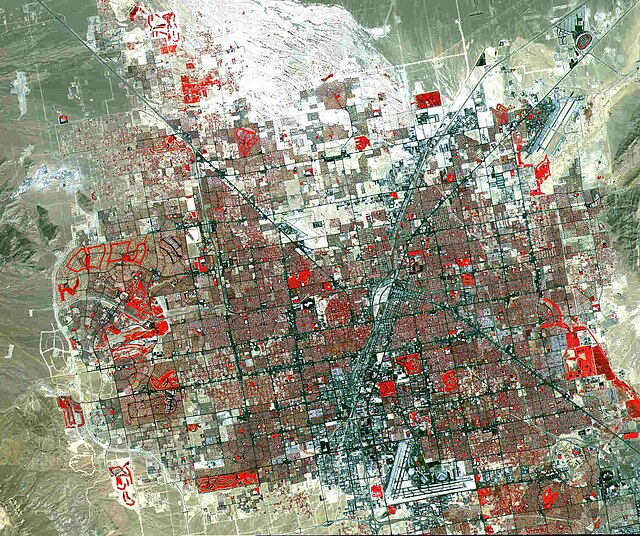False colors and pseudo colors respectively refers to a group of color rendering methods used to display images in colors which were recorded in the visible or non-visible parts of the electromagnetic spectrum. A false-color image is an image that depicts an object in colors that differ from those a photograph would show. In this image, colors have been assigned to three different wavelengths that human eyes cannot normally see.
A mosaic constructed from a series of 53 images taken through three spectral filters by Galileo's imaging system as it flew over the northern regions of the Moon in December 1992.
Burns Cliff inside of Endurance crater on Mars. The color is approximate true color because, instead of the red spectral band, infrared was used. The result is a metameric failure in the color of the sky, which is slightly green in the image – had a human observer been present, then that person would have perceived the actual sky color to have a bit more orange in it. The Opportunity rover which captured this image does have a red filter, but it is often not used, due to the higher scientific value of images captured using the infrared band and the constraints of data transmission.
This approximate true-color panorama shows the impact crater Endurance on Mars. It was taken by the panoramic camera on the Opportunity rover and is a composite of a total of 258 images taken in the 480, 530 and 750 nanometer spectral bands (blue / green, green and near infrared).
A traditional false-color satellite image of Las Vegas. Grass-covered land (e.g. a golf course) appears in red.
Color or colour is the visual perception based on the electromagnetic spectrum. Though color is not an inherent property of matter, color perception is related to an object's light absorption, reflection, emission spectra and interference. For most humans, colors are perceived in the visible light spectrum with three types of cone cells (trichromacy). Other animals may have a different number of cone cell types or have eyes sensitive to different wavelength, such as bees that can distinguish ultraviolet, and thus have a different color sensitivity range. Animal perception of color originates from different light wavelength or spectral sensitivity in cone cell types, which is then processed by the brain.
Colored pencils
Twelve main pigment colors






